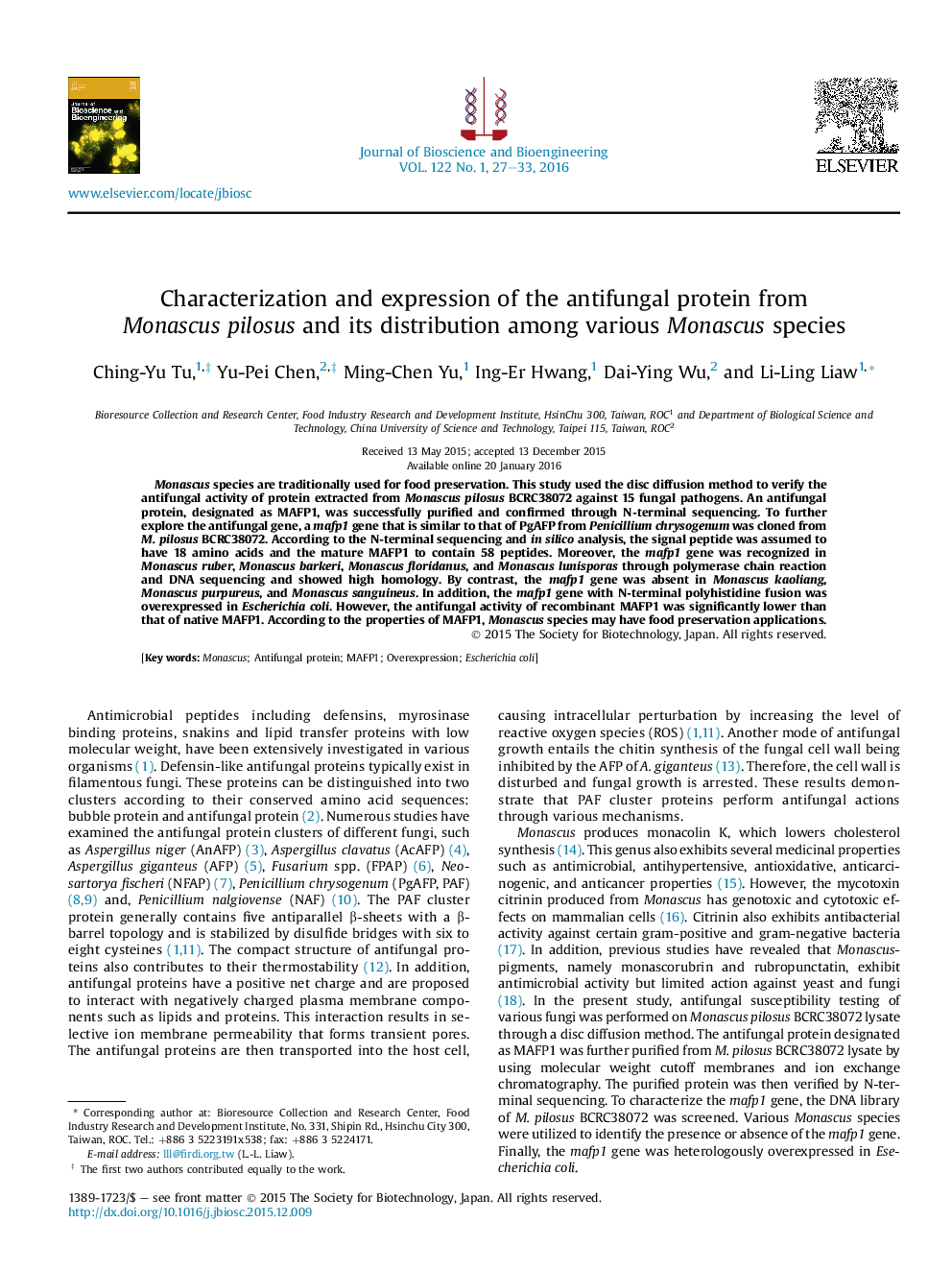| Article ID | Journal | Published Year | Pages | File Type |
|---|---|---|---|---|
| 19975 | Journal of Bioscience and Bioengineering | 2016 | 7 Pages |
•The antifungal activity from Monascus pilosus was against 15 fungal pathogens.•We have purified and verified the antifungal protein designated as MAFP1.•The mafp1 gene was cloned and expressed in Escherichia coli.•The distribution of mafp1 gene was recognized among various Monascus spp.
Monascus species are traditionally used for food preservation. This study used the disc diffusion method to verify the antifungal activity of protein extracted from Monascus pilosus BCRC38072 against 15 fungal pathogens. An antifungal protein, designated as MAFP1, was successfully purified and confirmed through N-terminal sequencing. To further explore the antifungal gene, a mafp1 gene that is similar to that of PgAFP from Penicillium chrysogenum was cloned from M. pilosus BCRC38072. According to the N-terminal sequencing and in silico analysis, the signal peptide was assumed to have 18 amino acids and the mature MAFP1 to contain 58 peptides. Moreover, the mafp1 gene was recognized in Monascus ruber, Monascus barkeri, Monascus floridanus, and Monascus lunisporas through polymerase chain reaction and DNA sequencing and showed high homology. By contrast, the mafp1 gene was absent in Monascus kaoliang, Monascus purpureus, and Monascus sanguineus. In addition, the mafp1 gene with N-terminal polyhistidine fusion was overexpressed in Escherichia coli. However, the antifungal activity of recombinant MAFP1 was significantly lower than that of native MAFP1. According to the properties of MAFP1, Monascus species may have food preservation applications.
